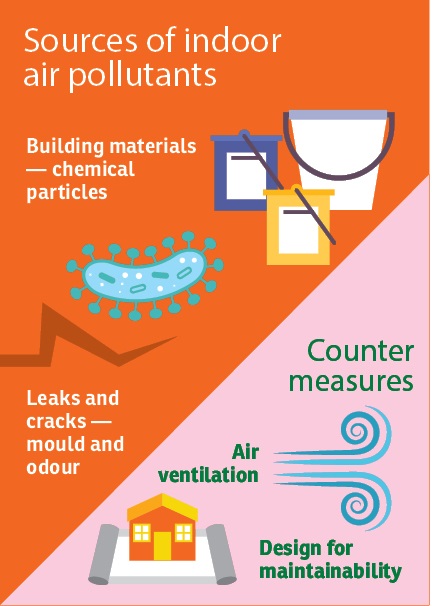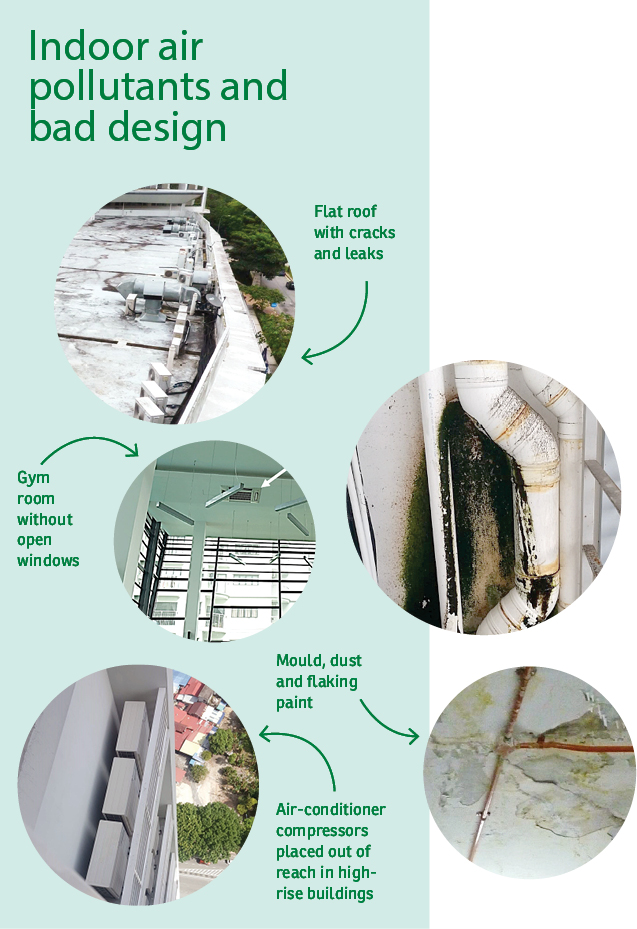Design for maintainability and better indoor air quality
![Lee: When there are leaks, mould grow…That’s when you bring in anti-mould [solutions]. But what can kill the mould, can also kill you. (Photo by Low Yen Yeing/EdgeProp.my)](https://dbv47yu57n5vf.cloudfront.net/s3fs-public/editorial/my/2019/June/28/Anthony_28%282%29.JPG)
A gym with adequate equipment, beautiful fittings and sufficient air-conditioning, but not a single window. How healthy could it be if you are exercising in such a gym in cold sweat, literally?
This is one of the real life examples given by accredited building inspector and trainer from Architect Centre, Anthony Lee Tee, during his session at EdgeProp.my Talk on Building for ‘Wellness’ organised in collaboration with Panasonic Malaysia on June 26 in Kuala Lumpur.
“Many of the buildings we are living in today have a fundamental problem — no fresh air” said Lee in his talk entitled “How ‘Sick’ can a Building be? – Kisah Benar”, where he highlighted the importance of incorporating elements that ensure good indoor air quality from the building and design stage.
The event was attended by over 80 top management personnel of property development firms.
Unpreventable indoor air pollutants
According to Lee, it is a challenge to prevent indoor air pollutants because they come from everywhere including building materials.
“What is good for building performance may not be good for humans, animals and the environment. Hence, it is so important to take care of air ventilation, to ‘flush’ out these pollutants,” he said.
He gave the example of asbestos sheets that are still legally made and sold in Malaysia, or via online. Asbestos, which could be used as insulation in buildings, has been proven to cause several cancers and diseases.
Other building materials that release indoor air pollutants include oil-based paints, volatile organic compounds (VOCs) found in products such as adhesives and wood preservatives, perfluorinated compounds (PFCs) found in carpets and fabrics, anti-microbial on engineered wood and floor tiles, polybrominated diphenyl ethers (PBDEs) that are used as flame retardants in furniture and upholsteries, and so on.

Leaks and cracks
Apart from the “unavoidable” air pollutants from building materials, indoor air could also be polluted when there are leaks and cracks on parts of the building.
Modern buildings with flat roofs are not unusual. “[We’ve done] 1,200 inspections over the last 12 years, so we have enough data to tell you, that flat roof leaks.
“When there are leaks, mold grow…That’s when you bring in anti-mould [solutions]. But what can kill the mould, can also kill you,” Lee said, adding that leaks could also cause paint flakes and dusts which could be toxic, [to enter the air circulation].
“This is why you have to stop it before it happens,” he said, pointing to early stage building designs that consider prevention of leaks and cracks.
Thoughtless design hampers maintenance
Lee stressed that developers also have to consider accessibility for repairs and replacements in their building designs. For instance, [avoid] air-conditioning compressors on high-rise ledges that are out of reach for maintenance and repairs or pipes in the wall that can’t be reached when a blockage happens.
When sewage pipes and air-cons are not well-maintained, indoor air will be affected. Furthermore, people are forced to break the walls to get to the pipes.
Hence, poor building design not only causes bad air quality, but might lead to more destructive outcome.

“Architects are very creative, they should find a way to ensure that we could still get in to service the pipes,” he said.
When it comes to air quality, sadly, requirements of indoor air quality standards in Malaysia are low and hence, property developers often fail to emphasise this aspect in their building design.
“Indoor air quality has got such a low bar, even lower than one can imagine. They know it’s there, but it’s not one of the criteria,” he said.
He urged developers to give greater consideration to building maintainability and integrate good indoor air quality aspects when they design their buildings.
According to Lee, designing for maintainability is almost absent in Malaysian buildings. Other than some buildings that are designed, built and managed by owners, other buildings that are built for sale tend to place more effort on aesthetics and appearance, instead of maintainability.
He said although building maintainability is part of an engineer’s training, the engineers are not usually the real decision makers.
“Malaysian [developers] have not put [maintainability] as their priority. But I think it’s very important because we are seeing very fundamental problems appearing in some buildings,” he noted, adding that the problems are escalating and getting worse.
When asked, he rated local buildings a score of below five out of 10 on maintainability.
He also urged developers to select building materials based on their manufacturing process, lifespan and consequences of disposal.
Watch what this expert has to say about indoor air quality.
This story first appeared in the EdgeProp.my pullout on June 28, 2019. You can access back issues here.
Never miss out
Sign up to get breaking news, unique insights, event invites and more from EdgeProp.
Latest publications
Malaysia's Most
Loved Property App
The only property app you need. More than 200,000 sale/rent listings and daily property news.
